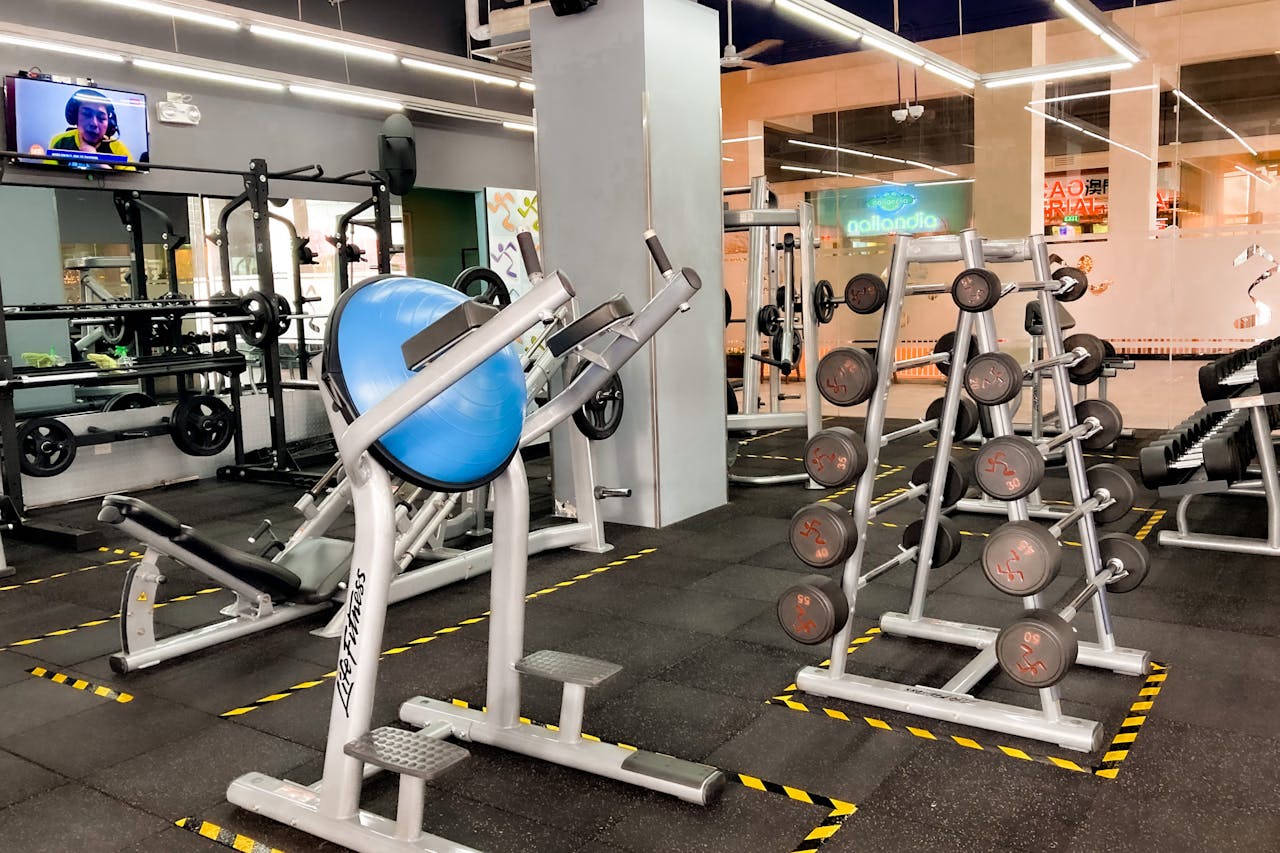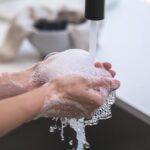Rubber flooring is renowned for its durability, versatility, and ease of maintenance, making it a popular choice for various settings such as gyms, playgrounds, commercial spaces, and even residential areas.
To ensure that your rubber floors remain in excellent condition and retain their aesthetic appeal over time, proper maintenance is essential.
This comprehensive guide provides detailed maintenance tips to help you keep your rubber floors durable and clean.
Understanding Rubber Flooring
Before diving into maintenance tips, it’s crucial to understand the types of rubber flooring available and their specific care requirements.
Rubber flooring comes in various forms, including rolled sheets, tiles, and interlocking mats, each suited for different applications and environments. Knowing the type of rubber flooring you have will help tailor maintenance practices effectively.
Types of Rubber Flooring
- Solid Rubber Flooring: Durable and suitable for high-traffic areas. Commonly used in gyms and commercial spaces.
- Recycled Rubber Flooring: Made from recycled materials, eco-friendly, and ideal for playgrounds and outdoor settings.
- Colored Rubber Flooring: Offers aesthetic versatility with various color options, suitable for decorative purposes.
Regular Cleaning Practices
Maintaining a regular cleaning routine is the foundation of rubber floor maintenance. Regular cleaning prevents the buildup of dirt, grime, and other contaminants that can degrade the floor’s surface over time.
Daily Sweeping and Dusting
- Purpose: Removes loose dirt, dust, and debris that can scratch or dull the rubber surface.
- Tools: Use a soft-bristle broom or a dust mop to gently sweep the floor.
- Technique: Sweep in one direction to gather debris efficiently, avoiding harsh scrubbing that can damage the floor.
Vacuuming Techniques
- Frequency: Vacuum high-traffic areas at least once a week.
- Tools: Utilize a vacuum cleaner with a soft brush attachment to prevent surface damage.
- Tips:
- Avoid using vacuum cleaners with beater bars or rotating brushes, as they can cause abrasions.
- Pay special attention to corners and edges where dirt tends to accumulate.
Deep Cleaning Methods
Periodic deep cleaning helps maintain the floor’s appearance and longevity by removing embedded dirt and stains that regular cleaning might miss.
Mopping with Appropriate Cleaners
- Suitable Cleaners: Use mild, pH-neutral cleaners specifically designed for rubber flooring.
- Avoid:
- Harsh chemicals like ammonia, bleach, or solvents, which can degrade the rubber.
- Oil-based cleaners that leave residues.
- Procedure:
- Dilute the cleaner as per the manufacturer’s instructions.
- Mop the floor using a soft mop, ensuring even coverage.
- Rinse with clean water to remove any soap residue.
- Allow the floor to air dry or use a clean, dry mop to speed up the process.
Steam Cleaning
- Benefits: Effective for sanitizing and deep cleaning without chemicals.
- Considerations:
- Ensure your rubber flooring is suitable for steam cleaning, as excessive heat and moisture can cause damage.
- Use a steam cleaner with adjustable settings to control temperature and steam output.
- Steps:
- Clear the area of furniture and obstacles.
- Pre-clean the floor by sweeping or vacuuming.
- Steam clean in sections, following the manufacturer’s guidelines.
- Allow ample drying time to prevent moisture-related issues.
Stain Removal Techniques
Accidents happen, and spills or stains can occur on rubber floors. Prompt and proper stain removal is essential to prevent permanent discoloration or surface damage.
Common Stains and How to Handle Them
- Grease and Oil:
- Solution: Sprinkle baking soda or cornstarch on the stain to absorb excess grease. Let it sit for 15 minutes, then vacuum or sweep it away.
- Alternative: Use a mixture of warm water and mild dish soap to gently scrub the area.
- Ink and Marker Stains:
- Solution: Dab the stain with isopropyl alcohol using a soft cloth. Avoid rubbing vigorously to prevent spreading the ink.
- Alternative: Use a magic eraser for stubborn ink marks.
- Food and Beverage Spills:
- Solution: Clean the spill immediately with a damp cloth and mild soap solution to prevent sticky residues.
- Tip: Use absorbent towels to blot liquids before mopping.
Using Natural Cleaners vs. Commercial Products
- Natural Cleaners:
- Pros: Environmentally friendly, non-toxic, and safe for children and pets.
- Examples: Vinegar and water solutions, baking soda paste.
- Usage: Effective for general cleaning and mild stain removal.
- Commercial Products:
- Pros: Formulated for specific cleaning tasks, often more effective for tough stains.
- Considerations: Ensure they are compatible with rubber flooring and free from harsh chemicals.
- Recommendation: Always test a small, inconspicuous area before widespread application.
Preventive Measures
Implementing preventive strategies can significantly reduce the frequency and intensity of cleaning required, preserving the floor’s condition.
Using Mats and Rugs
- Entrance Mats: Place mats at entry points to trap dirt and moisture, preventing them from being tracked onto the rubber floor.
- Area Rugs: Use rugs in high-traffic zones or areas prone to spills to protect the underlying floor.
- Benefits:
- Reduces wear and tear on the floor.
- Minimizes the accumulation of dirt and debris.
Implementing Proper Footwear Policies
- Guidelines: Encourage or require appropriate footwear, such as non-marking shoes or socks, especially in commercial or gym settings.
- Benefits:
- Prevents stains from shoe scuffs.
- Reduces the introduction of dirt and contaminants.
Protecting Your Rubber Floors
Taking proactive steps to protect your rubber flooring can extend its lifespan and maintain its appearance.
Applying Sealants and Protectants
- Purpose: Enhance the floor’s resistance to stains, moisture, and wear.
- Types:
- Rubber Floor Sealers: Provide a protective barrier without altering the floor’s texture.
- Floor Wax: Adds shine and minor protection but may require more frequent application.
- Application Tips:
- Clean the floor thoroughly before applying any sealant.
- Follow the manufacturer’s instructions for application and drying times.
- Reapply as recommended, typically every 6-12 months.
Addressing Scratches and Scuffs
- Minor Scratches:
- Solution: Use a rubber floor repair kit or a matching color rubber compound to fill in scratches.
- Procedure: Clean the area, apply the compound, smooth it out, and let it dry as per instructions.
- Deep Scuffs:
- Solution: Sand the area lightly with fine-grit sandpaper, clean the dust, and apply a repair patch or sealant.
- Professional Help: For extensive damage, consider consulting a flooring professional.
Routine Inspections and Maintenance
Regular inspections help identify potential issues early, allowing for timely interventions that prevent costly repairs.
Identifying Wear and Tear
- Signs to Look For:
- Fading or discoloration.
- Cracks or brittleness.
- Surface indentations or permanent marks.
- Loose or peeling sections.
- Action Steps:
- Address minor issues promptly to prevent them from escalating.
- Keep a maintenance log to track the condition of the flooring over time.
Scheduling Professional Maintenance
- When to Seek Help:
- For extensive cleaning needs beyond DIY capabilities.
- When dealing with significant damage or structural issues.
- For routine professional inspections to ensure the floor remains in optimal condition.
- Benefits:
- Access to specialized tools and expertise.
- Ensures thorough and effective maintenance.
- Can extend the lifespan of your rubber flooring through professional care.
Handling Repairs and Replacements
Despite regular maintenance, wear and tear are inevitable. Knowing how to handle repairs and when to replace sections of your rubber floor is crucial.
DIY Repair Tips
- Small Punctures or Tears:
- Materials Needed: Rubber patch kit, adhesive suitable for rubber.
- Steps:
- Clean the damaged area thoroughly.
- Apply adhesive to both the patch and the damaged section.
- Press the patch firmly onto the area and allow it to cure as per instructions.
- Surface Imperfections:
- Solution: Use a fine abrasive pad to smooth out minor surface irregularities.
- Procedure: Gently sand the area, clean off dust, and apply a protective sealant.
When to Seek Professional Help
- Extensive Damage: Large tears, deep punctures, or widespread wear may require professional intervention.
- Structural Issues: Problems with the floor’s substructure or significant deformation.
- Complex Repairs: Tasks that demand specialized equipment or expertise beyond DIY capabilities.
- Benefits of Professional Repairs:
- Ensures high-quality, durable fixes.
- Can address underlying issues that may not be apparent.
- Helps maintain warranty coverage, if applicable.
Environmental Considerations
Maintaining an optimal environment around your rubber flooring contributes to its longevity and performance.
Managing Moisture and Humidity
- Importance: Excess moisture can lead to mold growth, floor degradation, and unpleasant odors.
- Strategies:
- Use dehumidifiers in areas prone to high humidity.
- Ensure proper ventilation, especially in indoor settings like gyms or commercial spaces.
- Promptly clean up spills to prevent moisture accumulation.
Ventilation Best Practices
- Purpose: Proper airflow prevents moisture buildup and helps maintain air quality.
- Implementation:
- Install adequate ventilation systems in enclosed spaces.
- Use fans or open windows to promote air circulation.
- Regularly inspect and maintain ventilation equipment to ensure effectiveness.
Extending the Lifespan of Your Rubber Floors
Adopting best practices and avoiding common mistakes can significantly extend the life of your rubber flooring.
Best Practices for Long-Term Care
- Consistent Cleaning: Stick to a regular cleaning schedule to prevent dirt buildup.
- Prompt Spill Management: Address spills immediately to avoid stains and moisture damage.
- Use Protective Accessories: Mats, rugs, and furniture pads can protect the floor from direct wear.
- Avoid Harsh Chemicals: Stick to recommended cleaning agents to prevent material degradation.
- Control Traffic Flow: Designate specific pathways to minimize wear in high-traffic areas.
Common Mistakes to Avoid
- Using the Wrong Cleaning Products: Harsh or incompatible cleaners can damage the rubber surface.
- Neglecting Regular Maintenance: Allowing dirt and stains to accumulate can lead to permanent damage.
- Ignoring Minor Repairs: Small issues can escalate into major problems if not addressed promptly.
- Exposing to Extreme Conditions: Excessive heat, cold, or moisture can compromise the integrity of the flooring.
Conclusion
Rubber flooring is a durable and versatile option suitable for various environments, from commercial spaces to playgrounds and residential areas. Proper maintenance is key to preserving its functionality, appearance, and longevity.
By implementing regular cleaning practices, addressing stains promptly, protecting the floor with preventive measures, and conducting routine inspections, you can ensure that your rubber floors remain in excellent condition for years to come.
Additionally, understanding when to perform DIY repairs and when to seek professional assistance will help maintain the structural integrity of your flooring. Adhering to these maintenance tips not only enhances the aesthetic appeal of your space but also maximizes the investment you’ve made in choosing rubber flooring.
By following the guidelines outlined in this guide, you can effectively maintain your rubber floors, ensuring they continue to provide a safe, clean, and visually appealing surface for all users.






